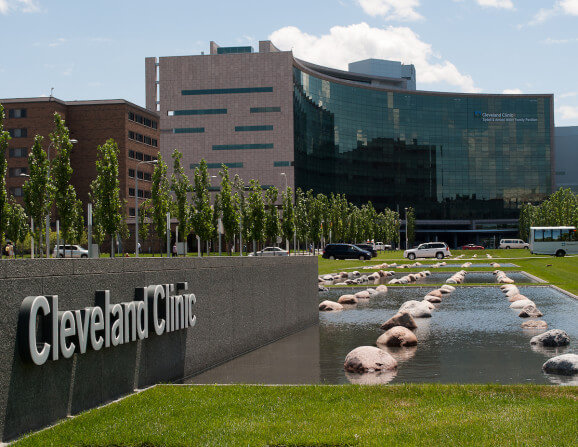Why Ohio health care startups saw a 206% funding increase

While there are a number of Midwestern cities that are home to promising health care startups, including Minneapolis and Chicago, Ohio is quickly positioning itself as a major player. The state has seen an influx of funding to health care and life sciences startups, and it produced one of the biggest Midwest startup exits of the year.
Earlier this year, one of the biggest successes in Ohio tech history — the $1.1 billion sale of CoverMyMeds to San Francisco-based McKesson Corp — became a core driver of this trend.
According to Hyde Park Angels‘ own research, drawn from Pitchbook, Mattermark, and internal data sources, Ohio startups raised a total of $574.7 million in venture funding this year, 69 percent of which went to health care companies. Additionally, of the 111 deals done in Ohio, 38 percent of them were in health care, and of the 14 exits in 2017, its largest was in health care.
Broken down further, in 2016, Ohio raised $305 million in venture capital investment, $125 million of which was in health care deals. This year, not only did total venture capital investment increase, but so did the percentage of dollars allocated to health care deals. Specifically, health care deals in Ohio received $383 million from investors — a 206 percent increase from last year.
Within Ohio, Cleveland led the way in life science investments, with $233 million in capital going to life science deals. Columbus, meanwhile saw the most growth in the health care IT space, with eight series A and B rounds in the sector this year.
Currently three of Ohio’s most highly valued companies — OnShift, CrossChx, and Enable Injections — are in the health care space. These companies focus on a diverse set of specializations, technologies, and applications, but they all have one thing in common: valuations over $60 million.
- OnShift: With an $83 million valuation, OnShift leads the pack. The workforce management software for hiring, scheduling, engaging, and retaining long-term care and senior living staff was recently named to the 100 fastest growing companies in Northeast Ohio for the third consecutive year by Weatherhead.
- CrossChx: Columbus-based CrossChx uses AI technology to create health care identity management solutions and has earned a valuation of $82.7 million.
- Enable Injections: Enable Injections develops and manufactures on-body delivery devices that allow patients to self-administer therapeutics and is valued at $64.6 million.
Why are we seeing this increase in both the number of successful health care companies and the amount of money invested in them?
For one, Ohio is home to Fortune 500 companies with a vested interest in supporting the development of new health care technologies, such as Procter & Gamble and Cardinal Health. At Hyde Park Angels, we have observed that the presence of large, established companies within a specific area often creates opportunities for new companies to emerge. They have more of an incentive to innovate and support startups because a market exists, along with core customers, strategic partners, and corporate investors.
Furthermore, organizations in Ohio have found ways to collaborate with these Fortune 500 companies to benefit the entire technology ecosystem.
In Cincinnati, Cintrifuse is a public-private partnership with a core focus on building a tech-based economy by bringing together large corporations, universities, investors, and startups. In addition to investing in venture funds and supporting hundreds of startups with resources, Cintrifuse collaborates with big companies like Procter & Gamble, Humana, and Mercy Health to connect them with tech solutions, pilot partners, and potential investments.
The support Cintrifuse and organizations like Flashstarts in Cleveland and Rev1Ventures in Columbus offer across the board signal a maturing ecosystem with the infrastructure and connections necessary for growth across the startup sector, including health care.
Finally, success tends to beget success. As more health care startups generate revenue and investment interest, they pave the way for new generations of companies.
The billion-dollar CoverMyMeds focuses on streamlining the medication prior authorization process, using technology to connect providers, pharmacists, and other key stakeholders. Their goal is to improve time to therapy and decrease prescription abandonment. To date, CoverMyMeds has helped approximately 77.2 million patients get their medication. Before the acquisition, it was estimated that the company was generating approximately $100 million in revenue per year.
After the acquisition, the company announced a plan to add hundreds of new jobs in Columbus. This growth spurt will attract more health care technology-related talent to the region, breed the next generation of entrepreneurs learning from within health care what problems still exist to be solved, and draw in more attention from existing industry vertical leads and investors alike.
In 2018, we expect Ohio to become even more of a leader nationally in health care innovation. The combination of several highly valued companies poised to grow and exit, a base of interested large companies searching for new solutions, and a clear draw for new talent all point towards this path.
Ultimately, while Ohio’s health care startup sector is still maturing, several signs indicate that there are great opportunities ahead.
Originally featured in Venture Beat.
Image Credit: kevinmnord / Flickr